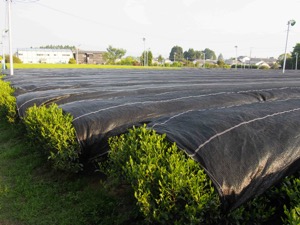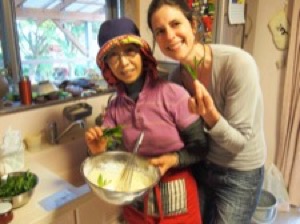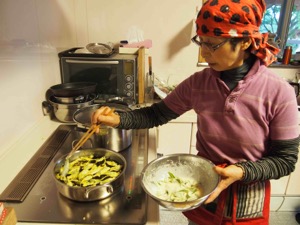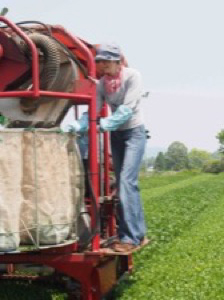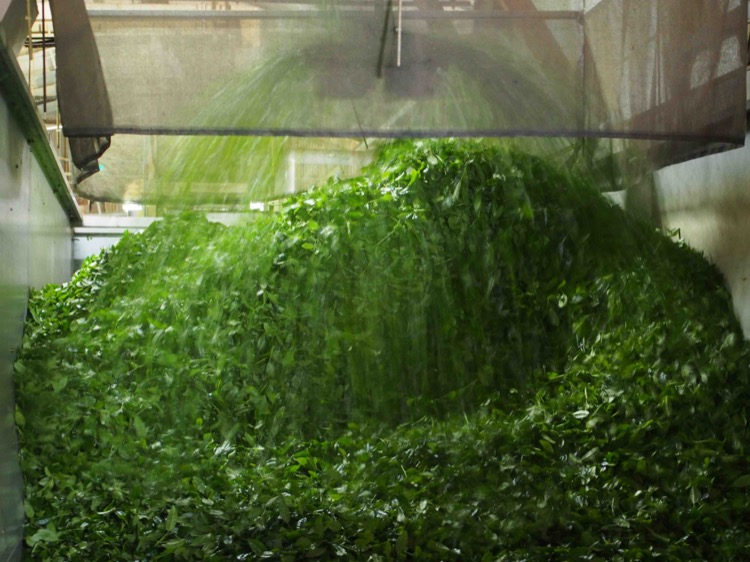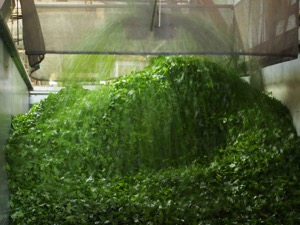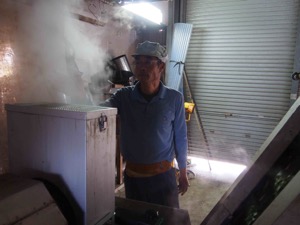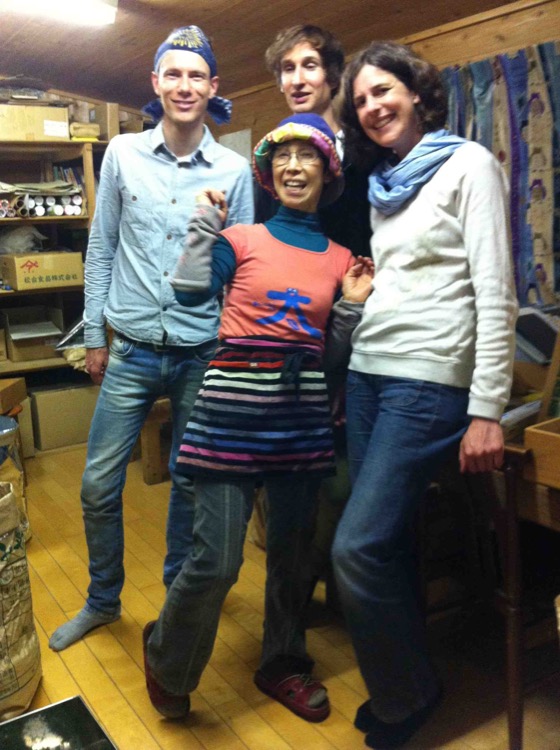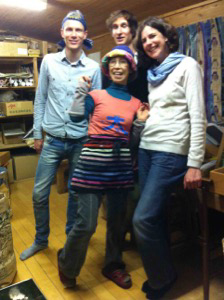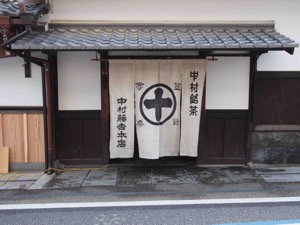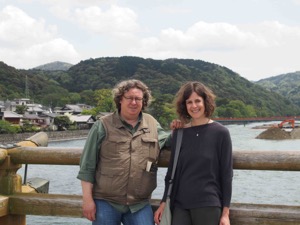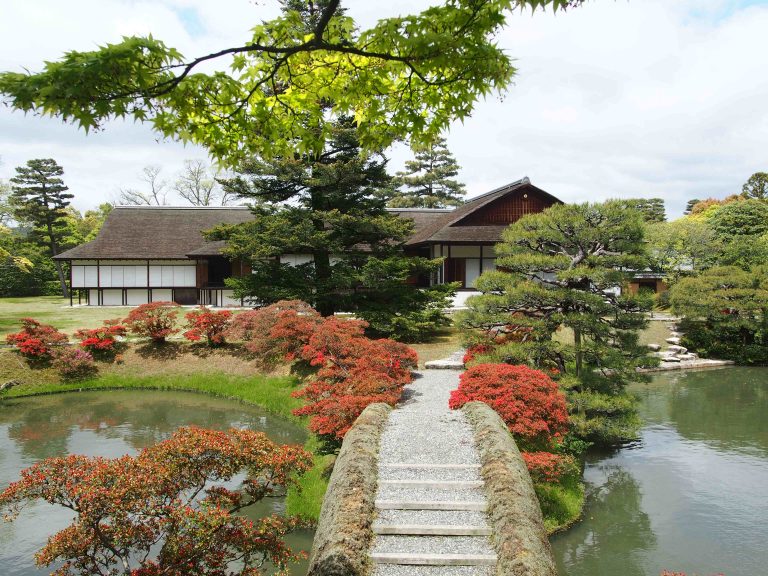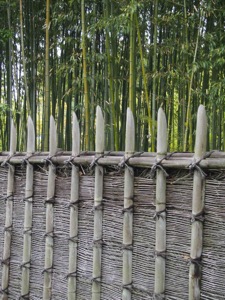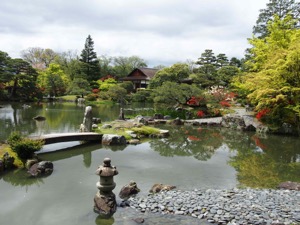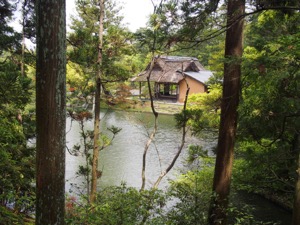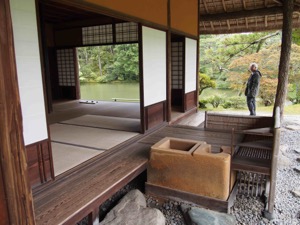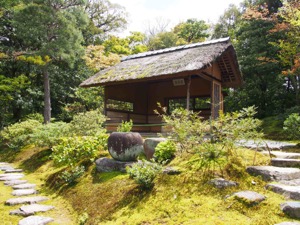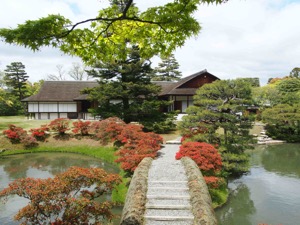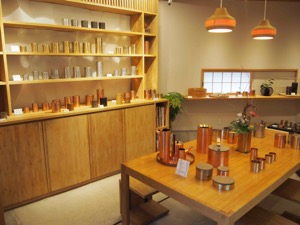
In the morning the rest of the Okumidori tea plants get covered with a shading net. Okumidori is a tea plant variety, which has a natural sweetness and is very appropriate to produce high quality teas. In our case the tea plants will be shaded for approximately one week until they will be harvested for the GO EN production. GO EN is a tea produced the old way without the last production step, which make the leaves needle shape. The longer drying in a rotating bamboo cylinder creates especially elegant flavors.
As it is Sunday and Haruyo san got a package with special sweets from her sister in Miyazaki, in the afternoon she prepares a pick nick for everybody under the trees close by the house. Of course the cold Matcha is part of the moment… during the ochatsumi (tea picking) Haruyo and Shigeru san drink it all day long.
In the evening Haruyo san brings along freshly picked Okumidori and Saki Mirdori tealeaves. In the morning I had asked here to prepare tea leaf tempura with me. We had it two years ago and since then I am dreaming of it. It is not so difficult, but the clue is to use really fresh tea leaves. We also do some tempura with sweet potato grown by Morimotos. Everything is just delicious!
At the end of the really nice dinner, Dirk surprises us with a little bit of tea, made by him today. With some tealeaves he just had picked around the house he made and improvised hand made tea in the kitchen of Morimotos. We all are very much surprised by the nice dark green colour of the leaves. Than Dirk prepares the tea for us and we are impressed by the shiny green colour and elegant nose… even the third brewing tastes nice. Haruyo and Shigeru san seem very happy as they always believed in our dream of making a high quality tea in Portugal… today we came a little step closer.
 Português
Português English
English Español
Español